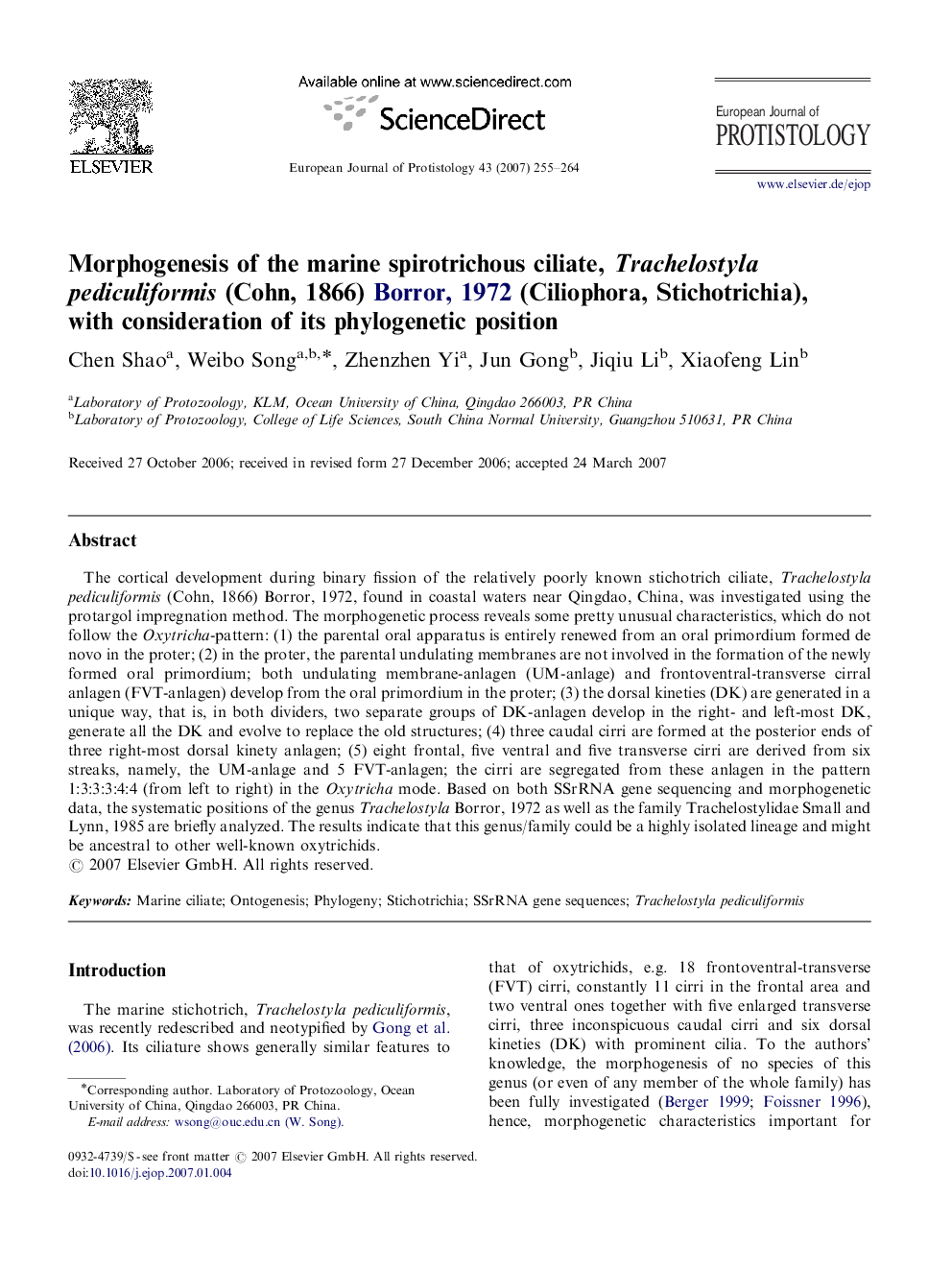| Article ID | Journal | Published Year | Pages | File Type |
|---|---|---|---|---|
| 2047376 | European Journal of Protistology | 2007 | 10 Pages |
The cortical development during binary fission of the relatively poorly known stichotrich ciliate, Trachelostyla pediculiformis (Cohn, 1866) Borror, 1972, found in coastal waters near Qingdao, China, was investigated using the protargol impregnation method. The morphogenetic process reveals some pretty unusual characteristics, which do not follow the Oxytricha-pattern: (1) the parental oral apparatus is entirely renewed from an oral primordium formed de novo in the proter; (2) in the proter, the parental undulating membranes are not involved in the formation of the newly formed oral primordium; both undulating membrane-anlagen (UM-anlage) and frontoventral-transverse cirral anlagen (FVT-anlagen) develop from the oral primordium in the proter; (3) the dorsal kineties (DK) are generated in a unique way, that is, in both dividers, two separate groups of DK-anlagen develop in the right- and left-most DK, generate all the DK and evolve to replace the old structures; (4) three caudal cirri are formed at the posterior ends of three right-most dorsal kinety anlagen; (5) eight frontal, five ventral and five transverse cirri are derived from six streaks, namely, the UM-anlage and 5 FVT-anlagen; the cirri are segregated from these anlagen in the pattern 1:3:3:3:4:4 (from left to right) in the Oxytricha mode. Based on both SSrRNA gene sequencing and morphogenetic data, the systematic positions of the genus Trachelostyla Borror, 1972 as well as the family Trachelostylidae Small and Lynn, 1985 are briefly analyzed. The results indicate that this genus/family could be a highly isolated lineage and might be ancestral to other well-known oxytrichids.
